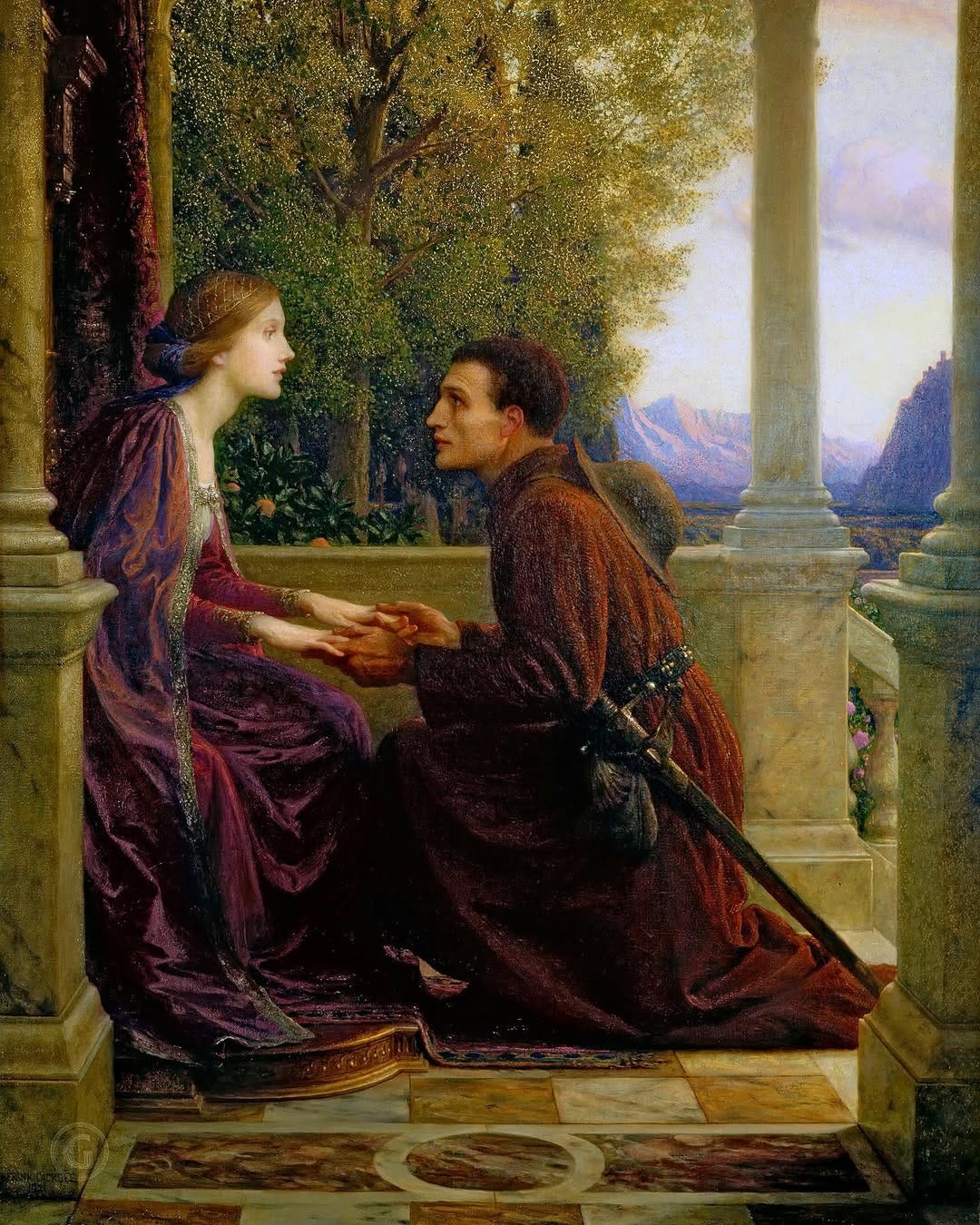SIR FRANK BERNARD DICKSEE - THE END OF THE QUEST, 1921
The artwork shows a knelt knight, and a seated lady, probably a maiden, both engaged in a moment of mutual admiration. The knight, having completed his arduous quest, appears weary yet relieved, while the lady, dressed in a decorated gown, gazes at him with a welcoming and compassionate look. The setting, painted in oil on canvas, features great details, vibrant colors, and a medieval aesthetic, capturing the culmination of a chivalric journey, blending narrative depth with visual opulence.
Dicksee began with a strong foundation in academic art, trained at the Royal Academy Schools. His early style featured tight brushwork, rich textures, and a polished finish, aligning with the academic tradition while incorporating Pre-Raphaelite intensity and symbolism. As he continued his brushwork loosened slightly, allowing for more expressive compositions. His evolution balanced tradition with subtle innovation, maintaining popularity among Victorian and Edwardian audiences while appealing to later collectors for his evocative, timeless quality.
Dicksee often drew inspiration from literary sources, including Shakespeare, Tennyson, and Malory’s Le Morte d’Arthur. The painting’s title and subject suggest inspiration from romantic or epic narratives where a hero completes a perilous quest, highlighting Tennyson’s Idylls of the King or similar tales of knightly devotion and rewarded love.
Dicksee influenced British art by sustaining romantic and Pre-Raphaelite traditions, shaping academic standards, and appealing to popular tastes during a transitional period. His work inspired artists committed to narrative and figurative painting, reinforced cultural ideals of chivalry and beauty, and provided a romantic counterbalance to emerging modernist trends, leaving a lasting mark on late 19th- and early 20th-century British visual culture




